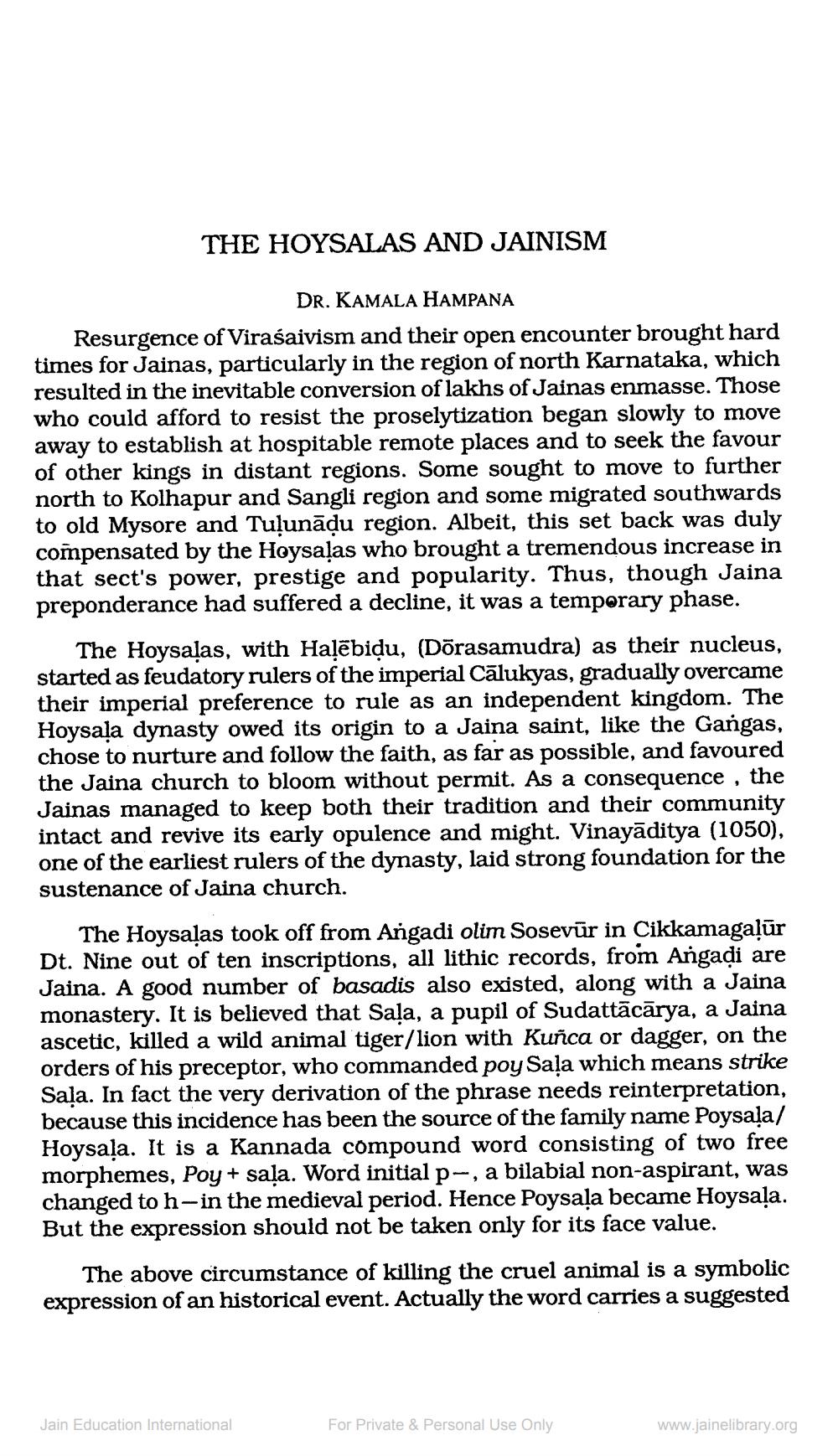________________
THE HOYSALAS AND JAINISM
DR. KAMALA HAMPANA
Resurgence of Virasaivism and their open encounter brought hard times for Jainas, particularly in the region of north Karnataka, which resulted in the inevitable conversion of lakhs of Jainas enmasse. Those who could afford to resist the proselytization began slowly to move away to establish at hospitable remote places and to seek the favour of other kings in distant regions. Some sought to move to further north to Kolhapur and Sangli region and some migrated southwards to old Mysore and Tulunadu region. Albeit, this set back was duly compensated by the Hoysalas who brought a tremendous increase in that sect's power, prestige and popularity. Thus, though Jaina preponderance had suffered a decline, it was a temporary phase.
The Hoysalas, with Halebidu, (Dōrasamudra) as their nucleus, started as feudatory rulers of the imperial Calukyas, gradually overcame their imperial preference to rule as an independent kingdom. The Hoysala dynasty owed its origin to a Jaina saint, like the Gangas, chose to nurture and follow the faith, as far as possible, and favoured the Jaina church to bloom without permit. As a consequence, the Jainas managed to keep both their tradition and their community intact and revive its early opulence and might. Vinayaditya (1050), one of the earliest rulers of the dynasty, laid strong foundation for the sustenance of Jaina church.
The Hoysalas took off from Angadi olim Sosevur in Cikkamagalur Dt. Nine out of ten inscriptions, all lithic records, from Angadi are Jaina. A good number of basadis also existed, along with a Jaina monastery. It is believed that Sala, a pupil of Sudattācārya, a Jaina ascetic, killed a wild animal tiger/lion with Kuñca or dagger, on the orders of his preceptor, who commanded poy Sala which means strike Sala. In fact the very derivation of the phrase needs reinterpretation, because this incidence has been the source of the family name Poysala/ Hoysala. It is a Kannada compound word consisting of two free morphemes, Poy + sala. Word initial p-, a bilabial non-aspirant, was changed to h-in the medieval period. Hence Poysala became Hoysala. But the expression should not be taken only for its face value.
The above circumstance of killing the cruel animal is a symbolic expression of an historical event. Actually the word carries a suggested
Jain Education International
For Private & Personal Use Only
www.jainelibrary.org




